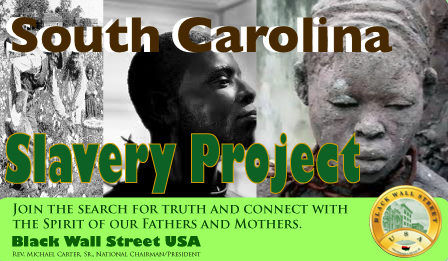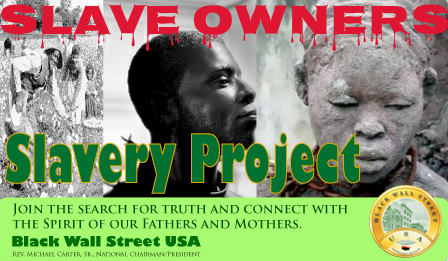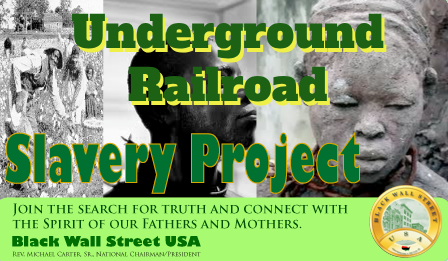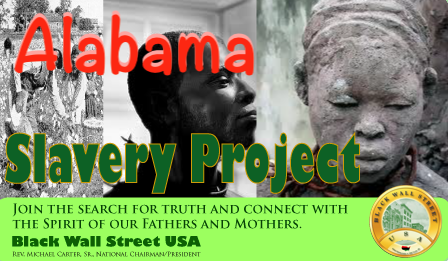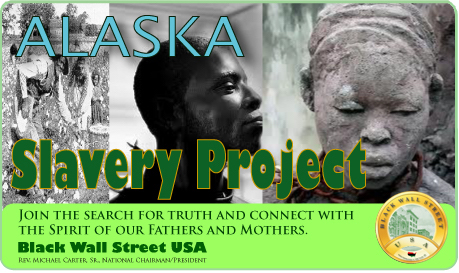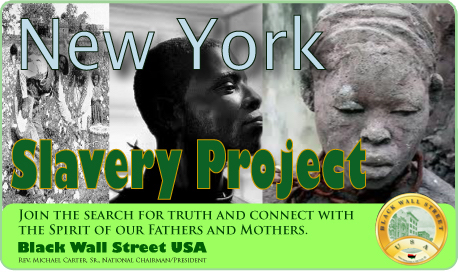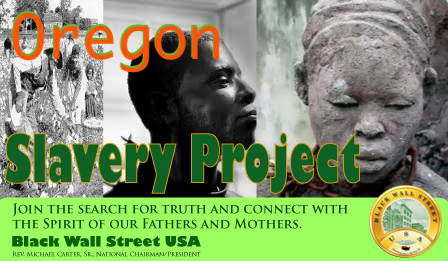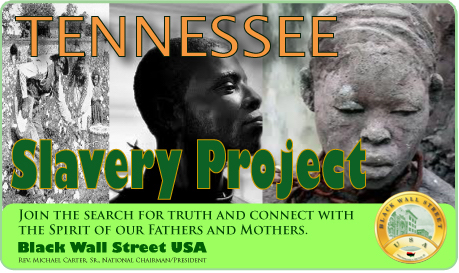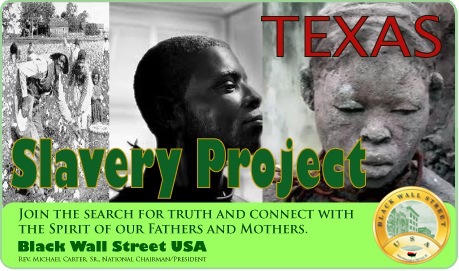The foundations of slavery in South Carolina can be traced back to 1670 when English settlers, many of whom came from Barbados, established Charles Town (now Charleston). These settlers brought with them not only knowledge of sugarcane plantation management but also the barbaric methods of enslaving Africans. Early on, Native Americans were enslaved and exported, but Africans soon became the dominant labor force as European diseases and warfare decimated indigenous populations. By 1708, South Carolina had a Black majority, a distinction it would maintain for the next two centuries. This demographic shift was the direct result of a booming plantation economy that relied heavily on the labor of enslaved Africans to cultivate rice, indigo, and later, cotton.
The rice plantations of the South Carolina Lowcountry became some of the most profitable in the world. This prosperity was made possible by the expertise of enslaved West Africans, many of whom came from the “Rice Coast” of Africa—modern-day Sierra Leone, Gambia, and Senegal. These Africans were specifically targeted by slavers because of their agricultural knowledge, which was indispensable in managing the intricate irrigation systems necessary for rice cultivation. The labor was grueling, and the environmental conditions were hazardous, with frequent outbreaks of malaria and yellow fever. Yet the planters thrived economically, turning Charleston into a wealthy port city and one of the epicenters of the transatlantic slave trade.
Charleston played a central role in the importation of enslaved Africans. By some estimates, nearly 40 percent of all Africans brought to North America during the transatlantic slave trade passed through the port of Charleston. The city became a marketplace of human chattel, where African men, women, and children were inspected, sold, and dispersed throughout the South. The slave markets in Charleston were institutions of horror—public auctions where families were torn apart and lives commodified. Some of these sites, such as the Old Slave Mart, now serve as museums, but their commercial origins still haunt the cityscape.
The economic foundation of South Carolina rested almost entirely on slavery, with massive profits feeding into the development of banking institutions, insurance companies, and trade networks. This gave rise to what many scholars now call the slavery industrial complex. Financial firms underwrote slave voyages, insured enslaved people as property, and extended credit to plantation owners. This capital enabled white South Carolinians to dominate politics and secure their wealth for generations. Institutions such as banks and insurance companies that had their roots in slavery continue to exist today, with some only recently acknowledging or researching their historical ties to slavery.
Colleges and universities in South Carolina also benefited directly from slavery. The University of South Carolina, founded in 1801, was constructed and maintained by enslaved labor. The university's early students and faculty were largely drawn from wealthy plantation families whose fortunes were built on slave labor. Enslaved individuals cooked, cleaned, built dormitories, and served students and professors alike. These contributions were essential but largely unrecognized until recent years when a growing movement for historical accountability led to a formal investigation into the institution’s ties to slavery. Similarly, institutions such as Furman University and the College of Charleston have acknowledged and begun to grapple with their roles in sustaining white supremacy through their connections to slaveholding families and ideologies.
Enslaved South Carolinians resisted their bondage in a myriad of ways. Rebellions, escape attempts, work slowdowns, and the preservation of African cultural practices served as acts of defiance against the dehumanizing institution of slavery. One of the most significant slave uprisings in American history occurred in South Carolina: the Stono Rebellion of 1739. Led by an enslaved man named Jemmy, a group of armed Africans attempted to march to Spanish Florida, where freedom was promised to fugitives. Although the rebellion was ultimately suppressed, it terrified the white population and led to the passage of the Negro Act of 1740, which severely restricted the movement, education, and assembly of enslaved people. These laws institutionalized racial control and underscored the extent to which slavery shaped every facet of life in the state.

The resilience and resistance of the enslaved community were not only seen in rebellions but also in cultural survival. The Gullah people of the South Carolina and Georgia coasts, descendants of enslaved Africans, maintained a distinct language, cuisine, spirituality, and folklore. The Gullah culture emerged as a rich blend of African and American traditions, reflecting the creativity and endurance of a people under relentless oppression. These cultural expressions were not merely remnants of a distant past but vibrant affirmations of identity and resistance, many of which continue to this day.
The Civil War, which South Carolina helped ignite by being the first state to secede from the Union in 1860, was fought in large part to preserve slavery. South Carolina’s political and economic elite made no secret of their motivations. In its Declaration of Secession, the state explicitly cited the failure of Northern states to uphold the Fugitive Slave Act as a primary reason for leaving the Union. South Carolina’s rebellion against the federal government was, in essence, a rebellion to protect the institution of slavery. The state became a major theater of the Civil War, enduring destruction and upheaval, yet the social order of white supremacy remained largely intact even after Union victory.
Following emancipation, the Freedmen’s Bureau established a strong presence in South Carolina. The Bureau provided critical support for formerly enslaved people, including food, shelter, education, and legal assistance. South Carolina saw one of the highest levels of Black political participation during Reconstruction, with African Americans holding office at local, state, and federal levels. Individuals like Robert Smalls, a formerly enslaved man who became a U.S. Congressman, emerged as powerful voices for Black advancement. However, white backlash was swift and violent, culminating in the rise of the Ku Klux Klan and the eventual end of Reconstruction in 1877. The promises of freedom and equality were violently curtailed, replaced by Jim Crow laws that reinforced racial segregation and economic disenfranchisement.
Throughout the 20th century, South Carolina remained a site of profound racial injustice and resilient Black resistance. Civil rights workers, labor organizers, and educators battled against segregation and economic oppression. Septima Clark, known as the "Mother of the Civil Rights Movement," was a South Carolina native who championed literacy and citizenship schools to empower Black communities. She worked closely with the Southern Christian Leadership Conference and Dr. Martin Luther King Jr., becoming a key figure in grassroots education efforts. Similarly, Modjeska Monteith Simkins, a fearless civil rights advocate from Columbia, worked to expand health care access and dismantle segregation in public institutions.
The Orangeburg Massacre of 1968 remains a chilling reminder of South Carolina’s violent resistance to Black civil rights. State troopers opened fire on unarmed Black student protesters at South Carolina State College, killing three and wounding dozens. This atrocity, largely ignored in national narratives of the civil rights era, reflects the deep-seated racism that persisted in the state well into the modern era.
Many corporations and institutions in South Carolina today still bear the imprint of their involvement in slavery. Large textile mills that once relied on Black sharecroppers evolved into industrial giants, often passing wealth down through generations of white families while Black laborers remained impoverished. Real estate companies and banks that financed post-emancipation segregation and redlining policies continue to profit from systems rooted in slavery-era exploitation. In recent years, companies and universities have issued public statements, formed commissions, or offered apologies, but the economic disparities remain stark, and few institutions have taken substantive steps to redress historical wrongs.
Contemporary South Carolina continues to grapple with the consequences of its past. Systemic racism, economic inequality, and disparities in education and health care disproportionately affect Black communities. The legacy of slavery is visible in the underfunded schools in majority-Black districts, the generational poverty that traps many Black families, and the monuments that still celebrate Confederate leaders. Despite these challenges, South Carolina’s Black communities remain vibrant and resilient, grounded in a long tradition of resistance and cultural survival.
This narrative of slavery in South Carolina is not merely a record of cruelty but also a testament to the strength, ingenuity, and perseverance of the enslaved and their descendants. From the indigo fields to the halls of Congress, from rice plantations to civil rights protests, the story of slavery in South Carolina is integral to understanding the state’s history and its ongoing struggle toward justice.
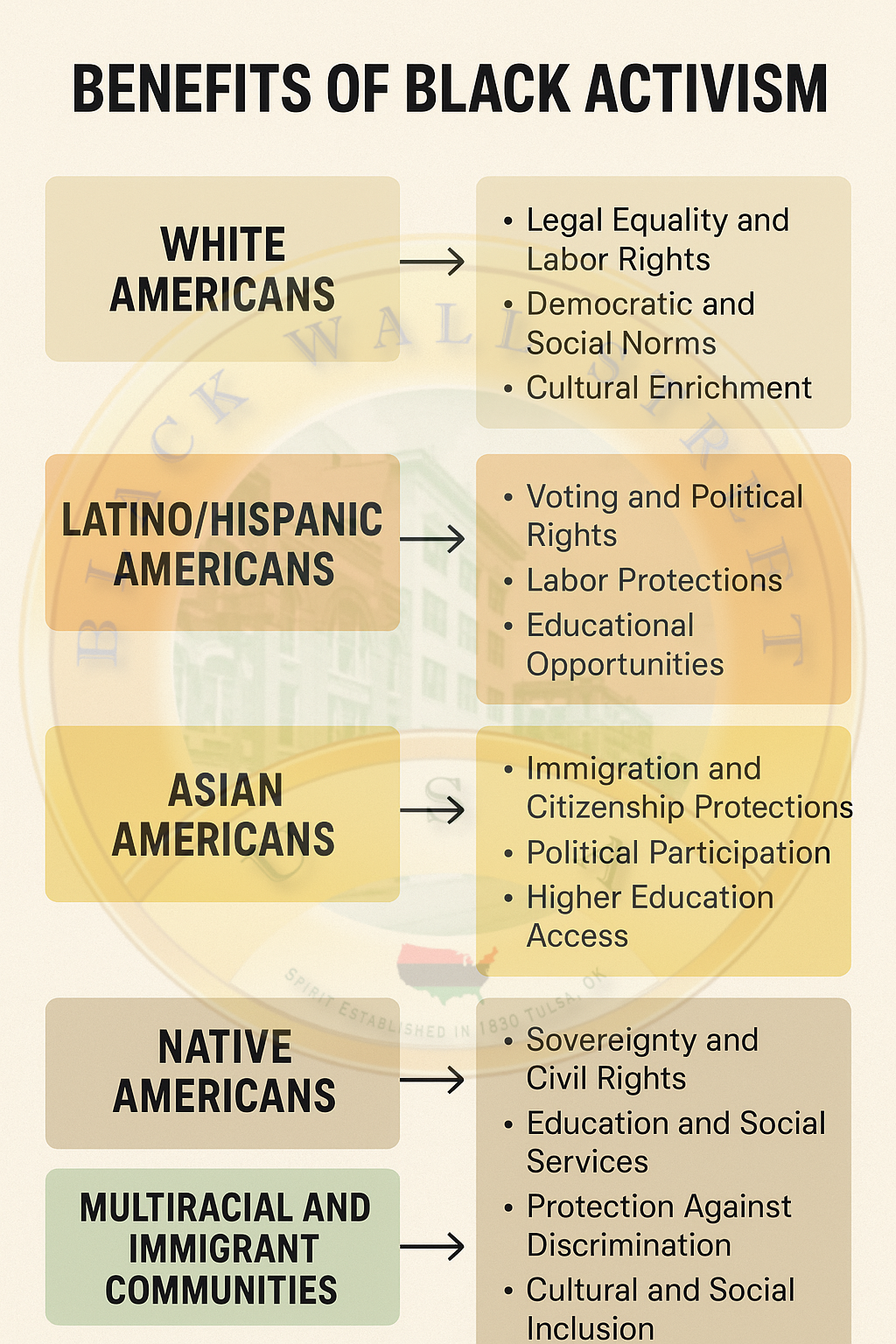
To further grasp the tentacular reach of chattel slavery within South Carolina’s socio-economic and institutional framework, one must examine the intricacies of how racialized labor became inseparable from conceptions of capital, citizenship, and the juridical architecture of white supremacy. The legal codification of Black subjugation in South Carolina was not merely reactive but rather foundational. As early as the Negro Act of 1740, which emerged in the wake of the Stono Rebellion, the state adopted an explicitly comprehensive and preemptive system of control.
This legislative corpus stripped enslaved Africans of rights to assemble, earn literacy, possess property, or bear arms, while also institutionalizing draconian penalties for resistance, escape, or insubordination. It represented one of the earliest forms of what scholars now regard as the carceral state—a system where Black corporeality was not only commodified but criminalized as a default state of being.
The pervasiveness of such legislation was mirrored by a cultural infrastructure that normalized the ontological death of the enslaved. Through theology, pseudo-science, and media, white South Carolinians cultivated an epistemology of racial difference that rendered African-descended peoples as either subhuman or perpetually childlike. Plantation owners and clergy alike crafted ideologies of paternalism, suggesting that enslaved individuals benefitted from bondage through Christianization and "civilization." Yet these notions were but veils for the extractive violence that undergirded the state’s rice and cotton economies.
Rice cultivation, particularly in the Lowcountry, demanded hydraulic engineering expertise that planters lacked. Consequently, planters actively trafficked enslaved individuals from the Windward Coast of Africa who possessed intimate knowledge of tidal irrigation. These Africans not only labored under brutal conditions but also literally built the infrastructure that made the state profitable—dykes, embankments, and floodgates whose remnants still crisscross the marshlands of Beaufort and Georgetown Counties.
This symbiotic relationship between forced labor and capital accumulation gave rise to a landed aristocracy in South Carolina whose wealth and social prestige were unmatched. Families such as the Middletons, Draytons, and Heywards accrued generational wealth through enslaved labor, leveraging profits into political influence and intergenerational institutional power. Many of these families were also central to the founding and governance of elite educational institutions, charitable foundations, and cultural institutions that exist today.
The University of South Carolina, for example, did not merely operate in a slave society—it was structurally dependent upon it. Enslaved men and women built and maintained its earliest buildings, while the curriculum and campus rituals reflected the prevailing ideologies of white supremacy. University records and diaries from the antebellum period reveal a normalized dependency on enslaved laborers who served students and professors alike, often under brutal and demeaning conditions. In recent years, efforts to historicize these truths have resulted in the placement of commemorative plaques and the publication of investigative reports, but a reckoning with institutional complicity remains partial and largely symbolic.
South Carolina’s role as a nucleus of proslavery ideology cannot be overstated. The state served as both intellectual and militant vanguard for the defense and expansion of slavery. John C. Calhoun, a towering figure in American political philosophy and a South Carolina native, articulated a vision of slavery not as a “necessary evil” but as a “positive good.” His writings became foundational to the ideological architecture of Southern secession. Calhoun’s legacy endures not merely in statues and university buildings that bear his name but in the deeply embedded racial hierarchies he helped justify and normalize.
Furthermore, Charleston served as a vital epicenter for Southern nationalism and anti-abolitionist sentiment. As Northern abolitionist literature filtered into the state, white vigilante groups such as the Charleston Guard Association organized book burnings, suppressed newspapers, and arrested suspected agitators. The very architecture of Charleston—its high-walled courtyards, slave galleries in churches, and fortified mansions—mirrored the psychological and physical architecture of white paranoia and Black containment.
Despite this repression, enslaved people in South Carolina consistently resisted their dehumanization through both overt and covert means. Beyond the more visible revolts, such as the Denmark Vesey conspiracy of 1822, resistance took on quotidian and strategic forms: the feigning of illness, tool sabotage, escape to maroon communities in the swamps, and the quiet subversion of plantation norms through cultural retention. Vesey, a literate formerly enslaved man who purchased his freedom, embodied the intellectual dimensions of resistance.
He was deeply informed by Haitian revolutionary thought, biblical justice, and the promises of the American republic—promises that were systematically denied to Black Americans. Although his insurrection plan was ultimately thwarted, and he and 34 others were executed, the conspiracy catalyzed a dramatic escalation in racial surveillance and repression, including the expansion of slave patrols and the further criminalization of Black religious gatherings.
One cannot discuss slavery in South Carolina without addressing the deep intertwinement of race, religion, and rebellion. The Black church, both during and after slavery, emerged as a clandestine sanctuary of resistance and a site of counter-hegemonic theology. Enslaved people synthesized Christianity with African spiritual traditions, creating a theological framework that emphasized liberation, justice, and communal solidarity. Praise houses, brush arbors, and clandestine worship services served dual purposes: they were spiritual lifelines and forums for political consciousness.
Many of the Black ministers who would later lead Reconstruction governments in South Carolina were themselves shaped in these crucibles of resistance theology. The African Methodist Episcopal Church, founded by South Carolinians such as Morris Brown, became a conduit for anti-slavery mobilization and postbellum Black civic organization.

The transition from slavery to freedom, ushered in by the Civil War and codified in the Emancipation Proclamation and the Thirteenth Amendment, was neither immediate nor linear. In South Carolina, as in much of the South, emancipation was met with both jubilation and brutal backlash. The Freedmen’s Bureau attempted to mediate this chaotic transformation, establishing schools, providing legal assistance, and facilitating land redistribution.
Yet its efforts were persistently undermined by white planters, former Confederates, and increasingly by the federal government itself as the will to enforce Reconstruction waned. Many of the gains achieved during this period—Black land ownership, political participation, educational attainment—were violently reversed through terrorism, disenfranchisement, and economic coercion.
Sharecropping and tenant farming emerged as neo-slavery systems designed to replicate the economic dependency of bondage under new guises. Black South Carolinians, promised "forty acres and a mule," were instead often forced into exploitative labor contracts that offered neither mobility nor equity. White landowners manipulated the credit system, used violence to suppress labor organizing, and called on the legal system to enforce debts and imprison dissenters. This transition from chattel slavery to debt peonage represents what scholar Saidiya Hartman describes as the "afterlife of slavery"—a condition in which the legal end of bondage fails to extinguish its social and economic logics.
Yet through each era, Black South Carolinians asserted their humanity and demanded justice. Figures such as Robert Smalls, who commandeered a Confederate ship and delivered it to Union forces before being elected to Congress, illustrate the audacity and brilliance of freedpeople. Smalls not only challenged the myth of Black incapacity but also fought for public education, voting rights, and equitable labor laws. His legacy, and that of many others, was effaced during the Redemption era, when white supremacist Democrats violently retook control of the state government through fraud, intimidation, and lynching. Between 1880 and 1930, South Carolina was the site of hundreds of lynchings and racial pogroms aimed at reinforcing white dominance and subjugating Black civic aspirations.
The 20th century bore witness to a new generation of freedom fighters who expanded the battle against anti-Black violence and structural inequity. Septima Poinsette Clark, born in Charleston in 1898, revolutionized the civil rights movement through pedagogy. A former educator dismissed for her NAACP affiliations, Clark developed literacy programs that enabled thousands of Black South Carolinians to pass discriminatory voter registration tests.
Her Citizenship Schools were adopted by the Southern Christian Leadership Conference and became instrumental in the broader civil rights movement. Likewise, Modjeska Monteith Simkins worked tirelessly to desegregate hospitals, register Black voters, and fight poverty. These women challenged not only white supremacy but also patriarchy, asserting the critical role of Black women in political mobilization.
The ongoing structural ramifications of slavery in South Carolina are perhaps most evident in the persistence of economic and educational inequality. Data from the 21st century reveals profound disparities in wealth, healthcare access, incarceration rates, and academic achievement between Black and white residents of the state.
These inequities are not the products of cultural deficits or individual failure but the direct inheritance of centuries of racialized economic exclusion and legal disenfranchisement. Redlining, urban renewal projects that razed Black neighborhoods, and disinvestment in public education for Black children created a stratified geography of opportunity. Today, counties with high concentrations of descendants of enslaved people—particularly in the Lowcountry and the Pee Dee region—often suffer from inadequate infrastructure, under-resourced schools, and high rates of unemployment.
Meanwhile, many of the corporations and institutions that profited from slavery continue to operate, often without acknowledgment or restitution. Banks that once insured slave ships or held slaves as collateral now function as pillars of the regional economy. Universities that relied on enslaved labor or benefited from donations by slaveholding families have only recently begun to confront their histories. Furman University, for example, issued a formal apology in 2018 for its namesake’s pro-slavery advocacy and institutional dependence on enslaved labor. The University of South Carolina has undertaken similar initiatives, including public reports and historical markers. Yet these efforts often stop short of material redress—failing to translate commemoration into compensation, or memory into justice.
The historical memory of slavery in South Carolina also remains deeply contested. Monuments to Confederate leaders and ideologues still adorn public spaces, while calls to remove or contextualize them are met with vitriolic opposition. The very terrain of public history—the naming of buildings, the contents of school textbooks, the representation of slavery in museums—continues to be a battleground. This struggle over memory is not ancillary but central to the enduring power dynamics established in slavery’s wake. Whose stories are told, whose pain is legitimized, and whose labor is honored are questions that shape collective identity and political direction.
At the same time, there has been a flourishing of efforts by descendants of the enslaved to reclaim narrative authority and historical agency. Projects such as the Gullah Geechee Cultural Heritage Corridor, oral history initiatives, and grassroots genealogical research have disrupted dominant narratives that either sanitize or marginalize slavery’s realities. These endeavors represent not merely acts of preservation but insurgencies of truth, challenging the epistemic violence that has long accompanied physical and economic subjugation. Black cultural expression—from music and literature to performance and public art—has become a crucible in which memory, resistance, and vision for liberation are forged.
The entrenchment of slavery in South Carolina not only constructed a hierarchical racial order, but also produced an enduring ontology of dispossession that outlived formal emancipation. Across centuries, the institutions birthed or bolstered by chattel slavery—economic, political, educational, and cultural—were never wholly dismantled, merely transfigured into more palatable structures of subjugation. To understand the legacy of slavery in contemporary South Carolina, one must examine how historical racial violence was neither incidental nor episodic but constitutive of the very statecraft and social contract upon which the region was built. From the plantation to the penitentiary, from auction blocks to algorithmic redlining, Black life in South Carolina has remained inextricably tethered to the afterlives of slavery.
The carceral state, as an extension of the plantation economy, remains one of the most salient examples of the continuity of racialized control. South Carolina’s incarceration rates, particularly for Black men, are among the highest in the nation. This reality cannot be understood outside of its historical genealogy. After the collapse of Reconstruction, Black Codes and vagrancy laws criminalized everyday behaviors of freedpeople, such as unemployment or “idleness,” and allowed for their arrest and forced labor under convict leasing systems. These carceral regimes were predicated on racial surveillance and economic exploitation, essentially perpetuating slavery under the guise of criminal justice. Prisons became surrogate plantations, often located in rural areas, where Black bodies were again deployed for profit—building infrastructure, harvesting crops, and serving the economic interests of the state.
The legacy of forced labor also reverberates in contemporary labor markets. South Carolina’s agrarian economy, particularly in tobacco, cotton, and peanut farming, transitioned into the 20th century with a dependency on Black labor that remained fundamentally exploitative. Black sharecroppers and tenant farmers were often denied equitable compensation, restricted from land ownership, and subjected to violence if they resisted or sought to organize. Labor unions, especially those affiliated with the Congress of Industrial Organizations (CIO) or the Brotherhood of Sleeping Car Porters, faced intense repression from white employers, police forces, and vigilante mobs. The brutal murder of Black labor leader Isaiah Nixon in 1948 for voting in a Georgia primary, though outside South Carolina, reverberated among Black laborers in neighboring states and demonstrated the mortal risks of demanding dignity.
Even as industrialization reshaped the Southern economy, Black workers were often excluded from emerging sectors. Textile mills, which proliferated throughout South Carolina in the early 20th century, generally refused to hire Black laborers for anything beyond the most menial, dangerous tasks. When industrial jobs became more accessible during the post-World War II era, they were still racially stratified, with wage disparities and promotion barriers that preserved white economic dominance. This economic marginalization was exacerbated by racial covenants in housing deeds, discriminatory loan practices by banks, and zoning laws that concentrated Black families in under-resourced neighborhoods. These spatial strategies—what geographers now refer to as the racialization of space—ensured that the architecture of segregation would be replicated in urban planning and environmental policy.
Education, too, was a principal site of inherited inequality. For over a century after emancipation, South Carolina’s Black schools were underfunded, understaffed, and structurally neglected. Despite constitutional mandates for educational equity, state and local authorities perpetuated dual school systems designed to deny Black children the tools of upward mobility. The landmark Briggs v. Elliott case—originating in Clarendon County, South Carolina—was one of the five cases consolidated into Brown v. Board of Education.
Though Brown ultimately declared school segregation unconstitutional, South Carolina’s political and educational elites launched massive resistance campaigns to delay and subvert integration. White citizens’ councils, the strategic use of private “segregation academies,” and gerrymandered districting preserved the racial status quo. As a result, Black students remained isolated in inferior institutions well into the late 20th century, and today, de facto segregation persists due to residential sorting, funding disparities, and institutional inertia.

The cultural legacies of slavery, however, have not only been resisted but reimagined by African-descended communities across South Carolina. The Gullah-Geechee people, descendants of enslaved Africans who retained a distinctive Creole culture, remain one of the most vital repositories of African diasporic heritage in the United States. Their unique language, oral traditions, cuisine, and spiritual practices reflect centuries of resistance, adaptation, and creativity.
These traditions, rooted in African epistemologies, offer a powerful counter-narrative to the silencing and erasure often embedded in dominant historical discourses. Yet, gentrification, climate change, and development threaten the physical and cultural sustainability of Gullah-Geechee communities, especially along the coastal Sea Islands. Land dispossession—through legal manipulation, tax delinquency sales, and exploitative real estate speculation—has accelerated the erosion of communal autonomy, evoking the historical continuity of economic predation.
The politics of memory also remains a contested terrain. Throughout South Carolina, monuments to the Confederacy and its ideologues still dominate public spaces. Figures such as John C. Calhoun and Wade Hampton are lionized in statuary that enshrines the very ideologies of racial subjugation they so fervently defended. Attempts to remove or contextualize these monuments have ignited fierce backlash, revealing the tenacity of neo-Confederate sentiment and the deep entrenchment of historical denialism.
The Charleston church massacre of 2015, perpetrated by a white supremacist radicalized by Lost Cause mythology, underscored the lethal consequences of sanitizing the past. Yet the state’s response—removing the Confederate flag from the Capitol grounds—was largely symbolic and unaccompanied by substantial investment in Black communities or historical reparations.
Meanwhile, Black South Carolinians have continued to fight for historical truth, equity, and restitution. Grassroots movements, historical societies, and community organizers have led efforts to recover burial sites of the enslaved, to preserve antebellum structures as sites of memory rather than romanticized nostalgia, and to demand institutional accountability from churches, corporations, and universities.
Institutions such as the International African American Museum in Charleston, opening in 2023, are part of a broader reclamation of historical narrative. The museum sits on Gadsden’s Wharf, one of the largest entry points for enslaved Africans in North America, and serves as a site of both mourning and resistance, acknowledging the state’s role in racial terror while celebrating Black survival and genius.
Academic work on South Carolina’s slave history has similarly expanded, with scholars employing interdisciplinary methodologies to reconstruct the lives and resistances of enslaved peoples. Archival reclamation, digital humanities, and oral history have helped excavate the submerged histories of women, children, maroons, and artisans whose lives were once obscured by plantation records and white supremacist historiography. This scholarship challenges earlier narratives that focused on elite white planters and instead centers the agency, ingenuity, and resilience of the enslaved. Researchers have traced the African linguistic roots embedded in Gullah speech, mapped escape routes to maroon communities, and examined spiritual practices that subverted Christian doctrine to articulate a theology of liberation.
The imperative of reparative justice has increasingly moved from the realm of moral aspiration to that of policy debate. Black communities in South Carolina have advanced demands for reparations in forms that are both symbolic and material: land restitution, educational investment, housing grants, tax relief, and historical redress. Critics often decry these efforts as impractical or divisive, but such critiques elide the historical fact that wealth was systematically extracted from Black labor and converted into white capital, often backed by state enforcement. The idea that the state can remain neutral in the face of its own documented complicity is untenable. A just society demands more than recognition—it demands repair.
In conclusion, the story of slavery in South Carolina is not merely one of historical brutality, but of structural continuity, cultural resilience, and unfinished liberation. From the coastal rice fields irrigated by West African ingenuity to the brutal logic of the auction block; from the pulpit of Denmark Vesey to the classroom of Septima Clark; from the terrors of convict leasing to the injustices of mass incarceration—the legacies of slavery are inscribed in the very soil and psyche of South Carolina. These legacies cannot be undone by apologies or commemorative plaques alone. They require a transformative reckoning—a restructuring of power, a redistribution of resources, and a radical honesty about the moral debts still owed. The future of South Carolina, and of the nation to which it gave so much of its soul and sin, depends on our collective willingness to confront and dismantle the enduring architecture of slavery’s inheritance.
For the descendants of the enslaved, the demand is not for pity, but for justice. For the institutions that profited from bondage, the requirement is not token reform, but structural atonement. And for a society that still dreams of democracy while upholding systems born in slavery, the call is clear: dismantle the remnants, redress the harms, and reconstruct a South Carolina where Black life is not only remembered, but truly liberated. Only then can the long shadow of slavery begin to recede, and the promise of freedom, long deferred, be made real.
1525
First arrival
Spanish explorer Ayllon brings a few enslaved Africans to the South Carolina coast. The attempt to build a colony fails. Before the survivors leave, some Africans may have escaped and then intermarried with native Americans in the area.
1670
Settlement
A group of about 100 English settlers and at least one enslaved African create the first permanent colony near present-day Charleston. Soon after the governor brings a family of enslaved Africans, known only as John Senior, John Junior, and Elizabeth, to the colony. In the following years enslaved Africans help establish the first colony in many ways, building homes and performing such tasks as the cooking, sewing and gardening required on plantations and in towns. They also use their African-learned cattle raising and driving skills--they are the first American cowboys. Around one in three of the early settlers are African.
1685
Rice Culture
Seed rice arrives in Charleston as a gift from a sea captain whose boat was under repair. Efforts by the English to grow rice fail. Enslaved Africans, who grew rice in Africa, show the English how to grow rice in wet areas--the rice culture, which creates great wealth for the colony, begins.
1708
Population growth
The growth of indigo and cotton requires more and more labor, which leads to the importation of more and more enslaved Africans. By 1708 the numbers of whites and blacks in South Carolina are equal at about 4,000 each, according to British census figures. For most of the next two centuries (except a brief period between 1790 and 1820) blacks will outnumber whites in the state.

1730-39
Resistance
About 20,000 enslaved Africans are brought to the state. Enslaved people resist in a wide range of ways, from acting lazy or stupid or breaking tools in order to minimize the work that is being forced upon them, to theft, running away, and even individual violent resistance.
1739
The Stono Rebellion
Although enslaved people have periodically fought back, this is the first large-scale rebellion. Roughly 100 enslaved Africans, led by "Jemmy," capture firearms about 20 miles south of Charles Town, and attempt to rally more people to join them. They plan to fight their way to St. Augustine where the Spanish promise freedom. They accidentally run in to a group of whites led by the Lt. Governor of the state, who alerts white authorities before the group has time to grow into an overwhelming force. The revolt is forcefully put down and some sixty of the rebels are executed.
1740
Slave Codes
In reaction to the Stono Rebellion, the legislature passes slave codes which forbid travel without written permission, group meetings without the presence of whites, raising their own food, possessing money, learning to read, and the use of drums, horns, and other "loud instruments," that might be used by enslaved Africans to communicate with each other.
1790
The Brown Fellowship Society is formed
It is one of many self-help groups formed by free African-Americans to help with education, burial costs, and support of widows and orphans of members. Others include the Human Brotherhood and the Unity and Friendship Society. The Brown Fellowship Society reflects the prejudice of the day, restricting its membership to those who are racially mixed and whose skin color is brown rather than black.

1792
Restrictions are placed on free African-Americans
South Carolina passes a law requiring all free African-Americans between the ages of 16 and 50 to pay a yearly "head tax" of $2.00, a significant sum of money in that day. This is but one of a number of laws that make life very difficult for the relatively few African-Americans who are free. In 1790 they number only 1,801 of the 109,000 African-Americans who live in the state.
1793
Cotton Gin
Invention of the cotton gin makes the growing of cotton profitable in non-coastal areas where only cotton with a lot of seeds in the bolls will grow. This greatly increases the need for labor and once again increases the number of enslaved Africans brought to the state.
1803
The Minors Moralist Society founded
A purely charitable organization founded by free African-Americans for the purpose of caring for free African-American orphans.
1810
Boxing
Tom Molyneux, who had won his freedom in Georgetown as a reward for his boxing skills, following eight straight wins, boxes against the world heavyweight champion in England. He loses this match when he hits his head on the ring post and fractures his skull. No other major boxing matches take place between blacks and whites until 1891.
1816
Camden Revolt
Few records exist about this revolt, but it is stopped before it really takes place. Local enslaved Africans are plotting a violent revolt in order to take revenge upon those who had enslaved them.

1817
AME Church
Morris Brown, wealthy free African-American, starts an AME church in Charleston. The church is closed forcibly after the Vesey Rebellion.
1820-1860
Edgefield Pottery
During the early 1800s, a number of enslaved people become famous for their beautiful and useful pottery made in this area. The most famous is known as Dave the Potter. Scholars estimate that some 140 potters were plying their craft in this area during this period.
1822
Denmark Vesey Rebellion
Led by Denmark Vesey, an African-Methodist church founder and former enslaved person who had bought his freedom, the rebellion is well-planned and widespread. It involves about 9,000 people. However, two house servants tell their masters before the planned date. Vesey and about 100 others are arrested. Vesey refuses to reveal any names, and he and thirty-three others are hanged.
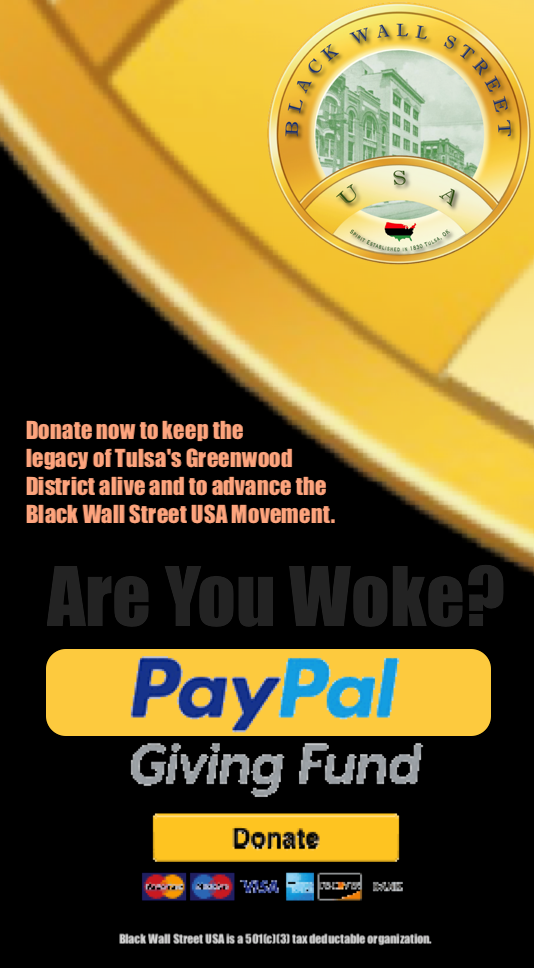
1829
The Georgetown Conspiracy
Details are sketchy, but a plot is uncovered and at least 20 enslaved people are arrested. Written documents suggest that many were hanged.
1839
The Christian Benevolent Society
The Christian Benevolent Society is formed by free African-Americans to provide for the poor.
1850
Fugitive Slave Law
This law, passed by Congress as part of a compromise to keep the nation together, is designed to help southern whites recapture enslaved people who flee to the northern "free" states. However, the law does not work very well because of abolitionists such as Robert Purvis. Born in Charleston to an enslaved mother and a white father, he is lucky in that his wealthy father sends him to school in the North. He settles in Philadelphia and helps organize the American Anti-Slavery Society and raises money for the underground railway.

1861
Sea Islands
Union forces take control of the Sea Islands. Enslaved African-Americans flee to the area where Union troops consider blacks to be free because they are the "contraband of war." That is, they were the property of the enemy which is forfeited. Formal freedom comes more than a year later with the Emancipation Proclamation.
1862 (May 12)
Robert Smalls
Robert Smalls sails The Planter through Confederate lines and delivers it and its cargo to Union forces off the South Carolina coast. He volunteers to help the Union Navy guide its ships through the dangerous South Carolina coastal waters for the rest of the war.
1862
Penn School
Two Northern Quakers create the Penn School on St. Helens Island after the Union captures the area and thousands of former enslaved people flee to safety there. The school survives as the Penn Center, serving as a conference center for the civil rights movement and a center for self-help and historical preservation today. The First Regiment of South Carolina Volunteers is formed. African-Americans in the Sea Islands area volunteer for the first black unit to fight in the war as part of a Union experiment. The unit proves to be a great success. Throughout the war over 5,400 South Carolina African-Americans serve in the Union Army. They are a small but important part of the 200,000 African-Americans from all over America who serve in the Union Army and fight in over 400 different engagements.
1864
Spirituals
The Atlantic Monthly publishes a collection of African-American spiritual hymns collected by Charlotte Forten, a free African-American from the North who comes to live and teach on St. Helena Island.
1865
New Constitution and Black Codes
Following the war, white South Carolinians rewrite the state constitution in order to return to the union. They restrict the right to vote and elect an all-white legislature that then passes the "Black Codes," which restrict rights of the newly freed people. Congress responds by passing the Reconstruction Acts, which require that the state rewrite the Constitution. African-Americans participate under federal military supervision.

1867
The Howard School
The Howard School is opened in Columbia. This is the only public school to serve African-Americans in Columbia until 1916. It serves all grades.
An African-American teacher, Francis Cardozo, founds the Avery Normal Institute in Charleston, a comprehensive school. No longer a school today, it exists as the Avery Research Center for African-American History and Culture.
1868
New Constitution
A convention of 48 whites and 76 blacks meet and write a very progressive constitution that includes representation based on population, a complete bill of rights, protection of a married woman's property rights, a homestead exemption, and a right to a public education.
A northern missionary, Martha Schofield, founds the Schofield Normal and Industrial School in Aiken. It later becomes a public high school for African-Americans and finally an integrated middle school.
State Senator and presidential elector B.F. Randolph is murdered by radical whites in Abbeville County.


1869
Joseph Rainey
Joseph Rainey becomes the first African-American in South Carolina to become a U.S. Representative in Congress. He is followed by seven others before African-Americans are driven out of elected office: Robert C. DeLarge, Robert Brown Elliott, Richard H. Cain, Alonzo Ransier, Robert Smalls, Thomas E. Miller, and George W. Murray.
The South Carolina Land Commission is created by the new legislature. Though troubled by corruption, the commission does sell farms to about 14,000 African-Americans.
The legislature grants a charter that creates Claflin College in Orangeburg.
Black and white workers form the Longshoreman's Protective Union Association. The Union is relatively successful until 1890 when whites break away to form their own separate group. After that the union declines.
1870
Public Education
The state legislature, with African-Americans in control, passes a law to create a state-wide public school system. Although insufficient funds are available, this is the first such effort in the history of the state.
The self-sufficient farming community of Promised Land is formed on land in Greenwood County bought from the S.C. Land Commission. Residents survive by avoiding the cotton based crop lien system and instead grow the food they need and avoid contact with whites during the difficult decades after Reconstruction.

1870
James Webster Smith
James Webster Smith of Columbia becomes the first African-American to enter West Point. He survives the vows of silence taken by other cadets, having to drill alone, eating after all the other cadets, being screamed at by instructors until 1874 when he is failed on an oral exam that is given to him in secret by a hostile philosophy professor and is dismissed from the academy. In 1996 President Clinton awarded him his West Point Commission posthumously.
November. Alonzo J. Ransier becomes the first African-American elected Lt. Governor. He is followed by Richard H. Gleaves in 1872.
1871
Benedict Institute With much support from African-American Baptists all over the state, the American Baptist Home Mission Society creates Benedict Institute, which later evolves into Benedict College.
The AME church founds Payne Institute in Abbeville, which in 1880 is moved to Columbia and becomes what is today Allen University.
1872
S.C. Agricultural College
The state legislature creates the S.C. Agricultural College and Mechanics Institute near Orangeburg, which later grows into S.C. State.
1873
University of South Carolina
The first African-American enters the University of South Carolina. All white students and faculty leave, but the school remains open with the help of white faculty from the North. After Reconstruction USC is reopened as an all-white school.
1876
The Hamburg Massacre
The Hamburg Massacre takes place near Aiken in a battle between Democratic private para-military groups and the African-American state militia. After forcefully disarming the militia unit, whites execute five of their prisoners.
November. Fraud, violence, and intimidation enable white Democrats to claim a victory, to try and take control of state government after the election, and to begin to dismantle Reconstruction.

1877
S.C. Election
Both parties claim to have won the election, and for several months the state has two governors and two sitting legislatures. The withdrawal of federal troops in April spells doom for the Republicans, who cannot match the firepower of the Democrats, led by Governor Wade Hampton.
Knowing that whites will soon force him off the bench, State Supreme Court Justice Jonathan Jasper Wright resigns from the court.
1878
Liberian Emigration
About 200 African-Americans from South Carolina, following the advice of Reverend Richard H. Cain, a member of Congress from South Carolina and a newspaper publisher, emigrate to Liberia. Despite Cain's call for a million people to go, few others do.
1879
Sea Island News
P.B. Morris founds a newspaper for African-Americans, the Sea Island News, later replaced by the New South after his death in 1891.
1880-1900
Migration
As conditions worsen in the state following the end of Reconstruction, about 20,000 African-Americans leave the state, many moving west as the frontier opens to opportunity. Out-migration accelerates after the turn of the century.
1881
Bettis Academy
Reverend Alexander Bettis, a former enslaved person, creates the Bettis Academy in Trenton in Edgefield County to teach basic academic skills and trades and crafts.
1882
Eight Ballot Box Law
White Democrats use the Eight Ballot Box law to disenfranchise African-American voters and pass laws to allow white registrars to strike African-Americans from the voting registration lists.
1885-6
Clarissa Thompson
Columbia native Clarissa Thompson has her book Treading the Winepress: A Mountain of Misfortune, published as a serial in a Boston newspaper, making her the first female African-American from South Carolina to have her work published.

1886
Arthur MacBeth
Arthur MacBeth opens a photographic studio in Charleston, winning many awards for his pioneering work.
1887
Mather Academy
The United Methodist Church founds the Mather Academy in Camden, the only African-American secondary school to be accredited during this period.
1890
The Colored Farmers' Alliance
The Colored Farmers' Alliance reaches a membership of 30,000 members in South Carolina and prints its own newspaper. However, a failed strike effort by cotton pickers a year later marks the decline of this self-help group.
1892
The Jenkins Orphanage
The Jenkins Orphanage is begun in Charleston by Rev. Daniel Jenkins, the only orphanage for African-Americans in the state. The band formed by Jenkins to help support the enterprise becomes famous, makes European tours, and produces many professional musicians.
1895
State Constitution Rewrite
Governor Ben Tillman leads a state constitutional convention to rewrite the state constitution to eliminate virtually all African-American influence in state politics. Six African-American politicians attend the convention (Robert Smalls, Thomas Miller, William Whipper, James Wigg, Isaiah Reed, and Robert Anderson) and speak out against the proceedings but are outvoted.
1896
African-American Voting
African-Americans, now comprising about sixty percent of the population, are relegated to less than five percent of the voters in South Carolina.

1897
Denmark Industrial School
Elizabeth Evelyn Wright and Jessie Dorsey open the Denmark Industrial School, which later becomes Vorhees Industrial School and then Vorhees College, one of many examples of African-American self-help in education.
1898
Battle of San Juan Hill
Battle of San Juan Hill, in which two African-American Cavalry units, the Ninth and Tenth, which include South Carolinians, help take the hill. According to some reports, they may have saved Teddy Roosevelt's "Rough Riders" from defeat.
1900
African-American Owned Businesses
The number of African-American owned general stores, the business centers in the communities across the rural state, reaches nearly 500, about ten times the number in 1880.
African-Americans own or operate more than half the farms in the state, but these are smaller farms, comprising only twenty-seven percent of the farmland in the state. However these farms are relatively productive, producing thirty-nine per cent of agricultural output.
The Colored Agricultural and Mechanical Association, begun by A.E. Hampton about a decade earlier, is holding county fairs all over the state to improve farmer education and self-sufficiency.
Simon Brown moves to Society Hill to work on the family farm of young William Faulkner. As an adult, Faulkner remembers Brown's stories about Brer Rabbit and Brer Fox and publishes them under the title The Days When Animals Talked. These tales preserved some of the trickster stories told by enslaved people.
1900-1950
The Exodus
An estimated half million African-Americans leave the state, mainly for northern cities during WWI and WWII when industrial opportunities are the greatest.

African American Libraries
See: African American Resources>Humanities>Libraries
African American Museums
See: African American Resources>Humanities>Museums
African American Research Centers
See: African American Resources>Humanities>Research Centers
African American Universities & Colleges
See: African American Resources>Education > African American Universities & Colleges
American Slavery>Slave Records
See: African American Resources>History>American Slavery>Slave Records

BlackWallStreet.org
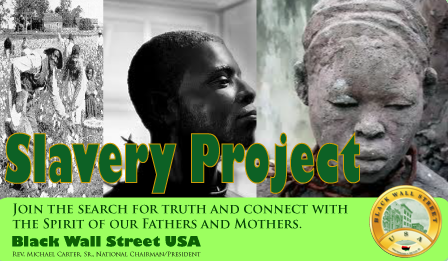
Slave Records By State
See: Slave Records By State
Freedmen's Bureau Records
See: Freedmen's Bureau Online
American Slavery Records
See: American Slavery Records
American Slavery: Slave Narratives
See: Slave Narratives
American Slavery: Slave Owners
See: Slave Owners
American Slavery: Slave Records By County
See: Slave Records By County
American Slavery: Underground Railroad
See: American Slavery: Underground Railroad

